Rohingya Music Online Library
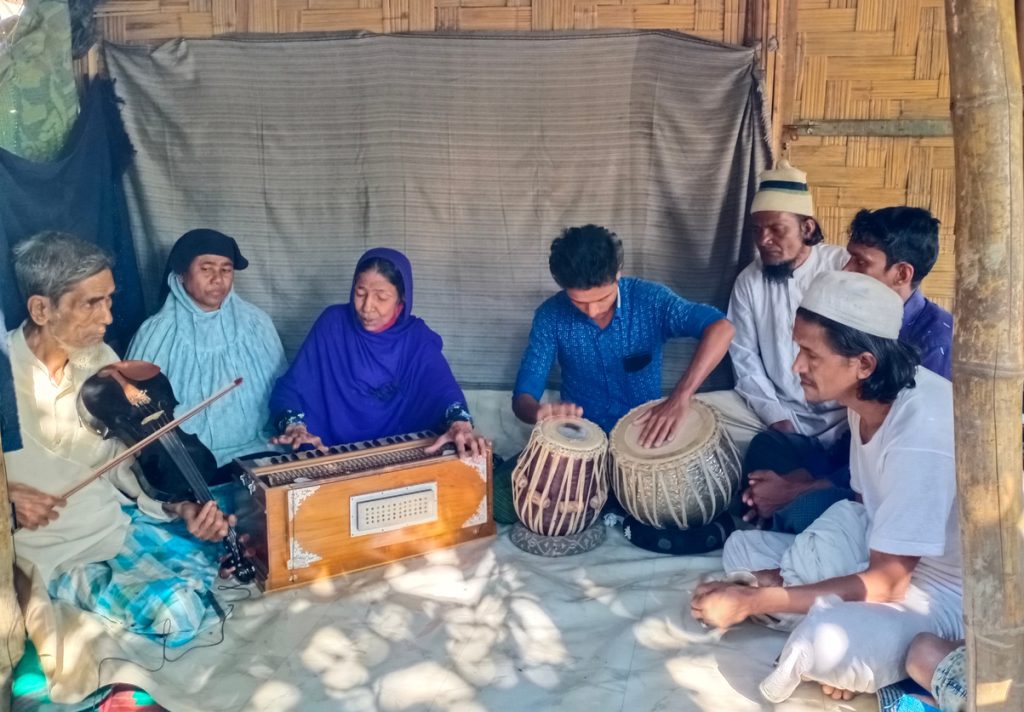
On their ancestral lands in Arakan in Myanmar (Burma), Rohingya musicians performed at parties, picnics, coming of age ceremonies, graduations, ear piercing parties, at big commercial expos to bring in potential customers, and at other gatherings. Some Rohingya musicians shared music as a part of Sufism, a religious practice passed down from generation to generation that includes devotional music and dancing. Music was also used in Myanmar for official government events, but Rohingya musicians weren’t hired for these events. Sometimes Rohingya music would accompany theater or dance. Liyakat Ali remembers that three such performances in 1989 generated enough money in ticket sales that the organizers were able to use the proceeds to build a school. But, by 1991, the Burmese government forebade Rohingya from having such arts events. By 2012, the government restricted Rohingya music further by forbidding the Rohingya from using microphones for their music or even for their calls to prayer. Rohingya music instruction took place in people’s homes, because the government would not allow Rohingya music schools as part of its efforts to suppress Rohingya culture.
In 2017 and 2018, immediately following the Rohingya Genocide and the arrival of hundreds of thousands of Rohingya Refugees in Bangladesh, armed groups prevented Rohingya musicians from making music. Eventually they relented. Then, Rohingya musicians in refugee camps were able to still play at all the same kinds of community events that they used to in Myanmar (Burma). Some things that have changed since life in Myanmar are that now, Rohingya musicians also share songs with messages that are helpful for the refugee camp community members, with information on subjects like hygiene, family planning, women’s rights, or public health. They may also perform at UN or NGO events, for World Refugee Day, and for community conversations organized by the camp authorities.
Some things that make music-making difficult are that event organizers need to get the permission of the camp authorities. And, musicians’ travel can be difficult, because security officers can seize people’s personal items if they believe those items show evidence of crimes, or assess fines if they believe people have taken part in criminal activity. Musicians can also hold informal performances in people’s homes, but this depends on having agreeable neighbors, because people live very close together.
The Rohingya tarana is a kind of Rohingya song that documents and shares about the oppression of the Rohingya people, often with huge and heavy emotions. Rohingya tarana existed in Arakan, but musicians would have to risk their lives or safety to sing them. If authorities heard the Rohingya taran, the Rohingya musicians would be punished. Now, Rohingya musicians can freely sing tarana. And, tarana now share about the events of the Rohingya Genocide. They frequently share the overwhelming feeling of loss as Rohingya lost their citizenship, their rights, and their lands. Sometimes, they also express hope for the future and a return to Arakan.
To the extent music education happens in the refugee camps, it happens informally in people’s homes, just as it did in Myanmar (Burma), because musicians still lack the facilities and permissions for a music school. Because of the decades of repression of the Rohingya people, their culture, and their music, and with the ongoing lack of formal Rohingya music education programs, Rohingya musicians strongly feel that their Rohingya music tradition is endangered, as is their Rohingya culture and identity. Older Rohingya community members worry that their youth aren’t learning and participating in Rohingya traditional culture.
As just one example, they notice more and more young people wearing pants instead of traditional lungi. (Rohingya musician Tahir said he used to wear pants, but when someone pointed out that this was one example of Rohingya losing their traditional culture, he vowed to only wear lungi from that day forward!) As another example, Rohingya musicians notice that whereas only live musicians used to accompany community events, it’s increasingly common to find people now just using music recordings. They know Rohingya youth have limited opportunities for learning in general, including learning about Rohingya culture, and point out that more and more young people have never experienced traditional Rohingya life in Myanmar (Burma), but have only ever lived in refugee camps. They also worry that people will forget Rohingya memories and histories because of the psychological effects of their trauma.
Mohammed Salam plays a traditional tune to demonstrate the recorder.
Unusually for Rohingya musicians, Salam also participates in a religious musical practice where he shares devotional music twice weekly. This practice, Sufism, is passed down from parents to children from generation to generation.
Most Rohingya do not consider music to be connected to religion, though some songs teach people religious words.
Although these Rohingya musicians may have lived far from one another in the Arakan region of their home country of Myanmar (Burma), they now live much closer. Still, travel can be difficult between the different camp zones, even when going to perform at official functions, because officials who give travel permissions do not necessarily recognize them as musicians.
Rohingya Cultural Memory Centre
The Rohingya Cultural Memory Centre is a project of the International Organization for Migration of the UN. Opening in 2022 and located inside the Rohingya refugee camps, its goal is to preserve and share Rohingya cultural memories, including Rohingya music and other Rohingya arts. The RCMC holds one of the largest English-language collections of information about Rohingya music.
Following closely, the Crossing Borders Music (CBM) library offers a unique contribution—not only archiving Rohingya music but also documenting the personal stories of individual Rohingya musicians and their lived experiences. This emphasis on oral history and personal narratives provides invaluable insight into how music shapes and reflects the Rohingya identity.
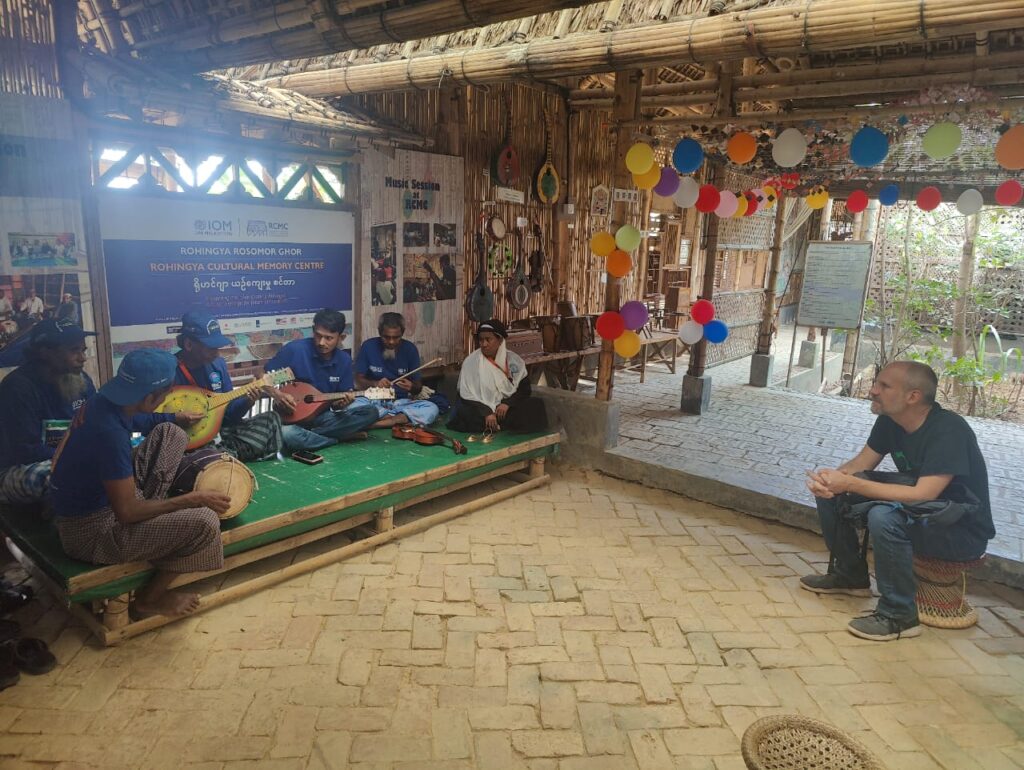
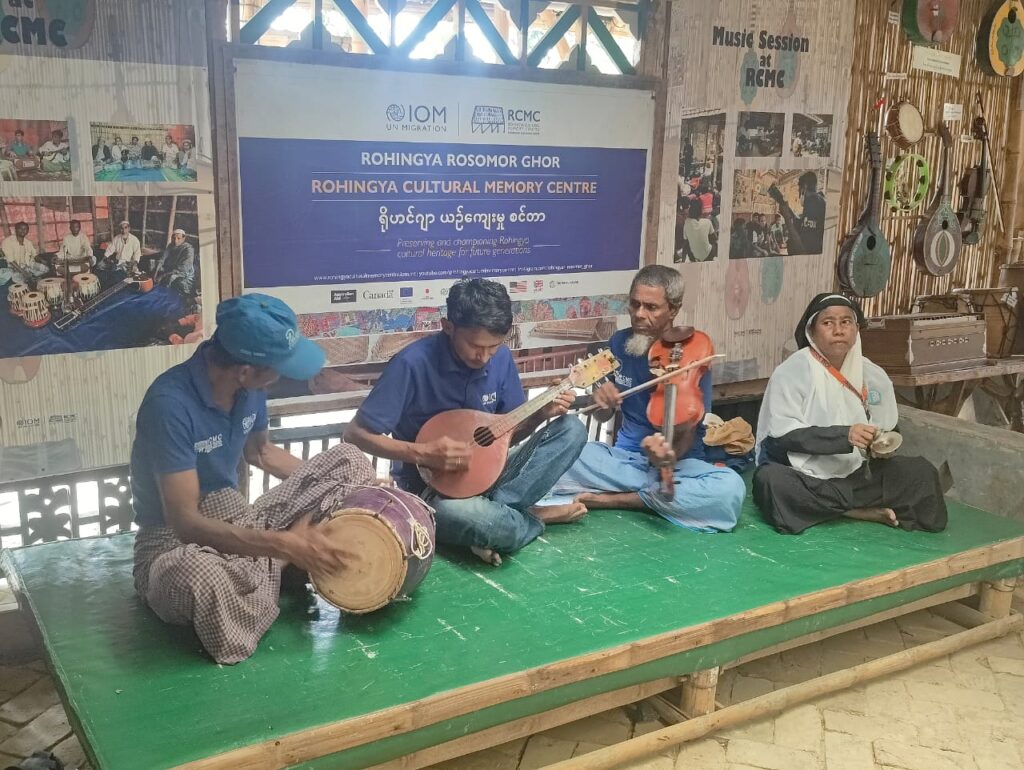
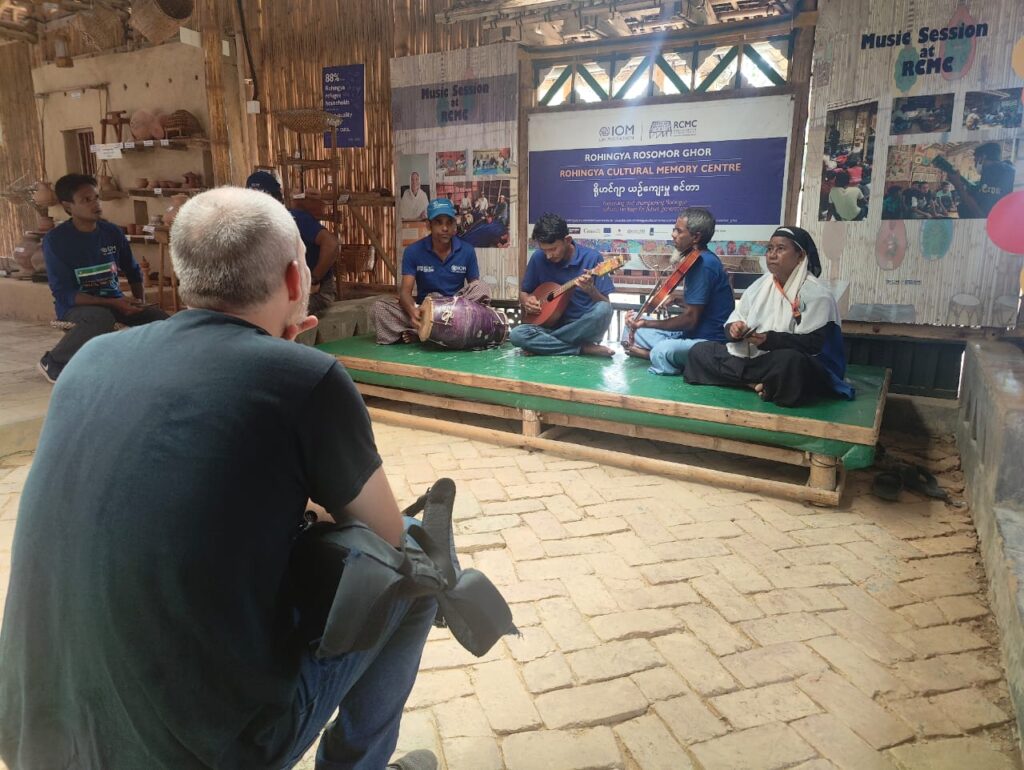
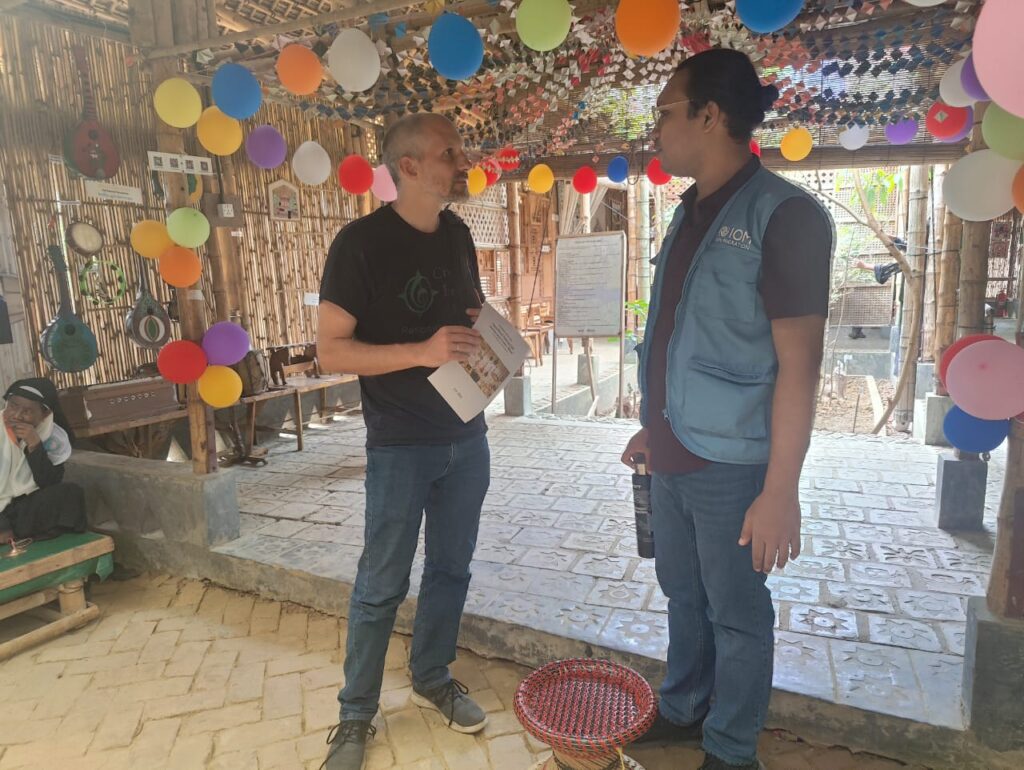
About Rohingya Music in Myanmar
In Myanmar, music was made mostly during the cool season. In this season, after 8-9 months of hard work planting, tending, and harvesting crops, people enjoyed 3-4 of rest after the harvest. During this season, sometimes Rohingya musicians were hired to perform at large trade fairs. Their performances would attract large audiences, bringing in many potential customers to the trade fairs.
In the Rohingya ancestral home in the Arakan region of Myanmar (Burma), the Rohingya were much more spread out across many small villages. It was difficult to coordinate musicians to perform together when they lived far apart and didn’t have the internet or other communication tools. For the same reason, it was also hard to promote musical events beyond one’s town. If musicians did try to travel to other towns, they faced inquiries at government checkpoints from security forces who might restrict their movement. Sometimes, they would have to perform for the security forces to prove they were musicians. So, compared to today, the performing ensembles tended to be smaller, and they shared music with fewer listeners.
Musical Traditions & Events
Rohingya music is used for important ceremonies and life events. Music would accompany coming of age ceremonies, graduation ceremonies, at farewell parties as a tribute to departing friends, at ear piercings to reassure anxious women and girls, or for picnics and parties.
In Myanmar (Burma), performances often took place at large public performances and might also include dancers, but those aren’t possible now due to the limited size of gathering space in the camps. These celebrations were extensive and could last between seven to eight hours (from 9pm until 4am!) Now the government’s refugee camp authorities require them to finish earlier.
This music would accompany a Rohingya bride as she travels through town to her new home with her husband’s family. Tapping on a mandolin represents hitting a drum, and this music would be carried through after the ceremony, accompanying the wedding reception.
Views on music among Rohingya are diverse. About 20% do not participate in any secular musical activities. On the other hand, music can be viewed as so important that some Rohingya will not consider a marriage to be valid if there is no music at the wedding.
